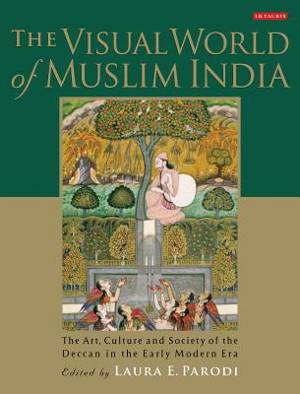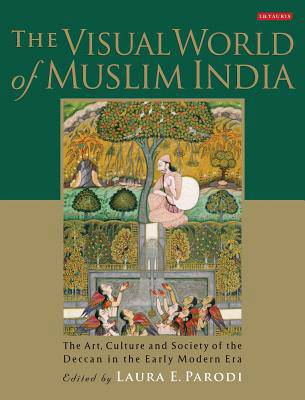
Je cadeautjes zeker op tijd in huis hebben voor de feestdagen? Kom langs in onze winkels en vind het perfecte geschenk!
- Afhalen na 1 uur in een winkel met voorraad
- Gratis thuislevering in België vanaf € 30
- Ruim aanbod met 7 miljoen producten
Je cadeautjes zeker op tijd in huis hebben voor de feestdagen? Kom langs in onze winkels en vind het perfecte geschenk!
- Afhalen na 1 uur in een winkel met voorraad
- Gratis thuislevering in België vanaf € 30
- Ruim aanbod met 7 miljoen producten
Zoeken
The Visual World of Muslim India
The Art, Culture and Society of the Deccan in the Early Modern Era
Laura E Parodi
€ 296,95
+ 593 punten
Omschrijving
Between the fourteenth and eighteenth centuries, the Deccan stood at the crossroads of far-reaching commercial and diplomatic networks, which ranged from Arabia and Iran to East Asia. Incresingly, these networks served as a conduit for European colonial expansion, and in the process the Deccan fell into the orbit of European interests. Its position and links to a wide variety of ultural influences produced in the Deccan an immensely rich visual culture. This was shaped further by the dynamic encounters between the different versions of Islam patronised by the ruling dynasties of the period, as well as by diverse local linguistic, religious and artistic traditions in the region. The Visual World of Muslim India is a richly illustrated and comprehensive exploration of the art of the late medieval and early modern Deccan. It explores the ways in which court art, artefacts and built environments were created and experienced, the reasons behind their creation, and the other agencies involved besides and beyond the court.Beginning with the idea of large spaces experienced by a range of subjects on a daily basis, this book continues with examples of architecture and architectural decoration that affirmed peculiar identities or beliefs, and finally considers some artefacts that played a role in court diplomacy as well as everydy life.
It therefore commences with an examination of the visual landscapes of the Deccan, including the magnificent Qutb Shahi capital of Golconda as well as smaller, less-known structures which constituted the 'city' in the early modern Deccan. There is also a focus on painting and painters, and their intersections with court policy and diplomacy, such as the earliest illustrated Dakani Urdu diwan- a collection of poems composed by a ruler of the Golconda kingsom. Muhammad- Quli Qutb Shah. The last section of the book leaves the boundaries of the courts and looks at the wider patterns of circulation of goods and ideas, highlighting the momentous social changes that followed the Mughal conquest of the Deccan (and their subsequent withdrawal from the region).This is an invaluable resource for all interested in the material and visual culture of South Asia and the wider Islamic world.
It therefore commences with an examination of the visual landscapes of the Deccan, including the magnificent Qutb Shahi capital of Golconda as well as smaller, less-known structures which constituted the 'city' in the early modern Deccan. There is also a focus on painting and painters, and their intersections with court policy and diplomacy, such as the earliest illustrated Dakani Urdu diwan- a collection of poems composed by a ruler of the Golconda kingsom. Muhammad- Quli Qutb Shah. The last section of the book leaves the boundaries of the courts and looks at the wider patterns of circulation of goods and ideas, highlighting the momentous social changes that followed the Mughal conquest of the Deccan (and their subsequent withdrawal from the region).This is an invaluable resource for all interested in the material and visual culture of South Asia and the wider Islamic world.
Specificaties
Betrokkenen
- Auteur(s):
- Uitgeverij:
Inhoud
- Aantal bladzijden:
- 400
- Taal:
- Engels
- Reeks:
Eigenschappen
- Productcode (EAN):
- 9781848857469
- Verschijningsdatum:
- 27/05/2014
- Uitvoering:
- Hardcover
- Formaat:
- Genaaid
- Afmetingen:
- 196 mm x 254 mm
- Gewicht:
- 1632 g

Alleen bij Standaard Boekhandel
+ 593 punten op je klantenkaart van Standaard Boekhandel
Beoordelingen
We publiceren alleen reviews die voldoen aan de voorwaarden voor reviews. Bekijk onze voorwaarden voor reviews.









